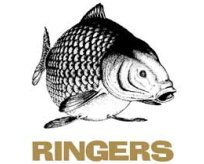The art of worm keeping and keeping worms alive is essential in order to prolong the worms life cycle. Worm care is a relatively simple procedure, which varies depending on the type of worm you keep.
Keeping Dendrobaena Worms
Dendrobaena are the easiest of worms to keep, this can be split into two parts – short term storage or long term.
For short term
say a week or less, the worms can be kept in the container or bag they have arrived in, they are normally sent out with sufficient bedding for the travelling and to keep for a couple of days. On arrival the worms should be opened immediately and checked, then extra bedding can be added, this can be torn up wet newspaper and/or cardboard, moss peat and dead leaves, you can fill the container or bag but don’t “cram” it in, worms like to move around! Always keep the lid on the container or the bag tightly shut but do change the air in the plastic containers every other day. The container or bag should then be kept at a cool temperature, around 10degC is ideal, a cool shed or garage is fine, we do not recommend putting them in a refrigerator but if this works for you, don’t change. Dendrobaena, like all worms will continually feed and the bedding should be topped up as necessary. One of the worst things to do is to take the whole container or bag to go fishing, worms hate changes in temperature so only take what you need for the days outing, on return, put any unused worms into a separate container, do not add back to the original.
Long term
As you would expect, we would recommend a Worm Keeper as supplied by us! this is what it is designed for and will be of the right size with the right bedding materials but if you insist on doing it yourself then read on.
On arrival the worms should be transferred into a larger container, a 2 gallon bucket should be considered as the smallest but it must have a tight fitting, ventilated lid. This or any other container will need to be half filled with a suitable bedding, see short term above, do not use soil. The container must be kept in cool conditions, the shed or garage is the usual place, as said before, the Dendrobaena will continually feed but in this case it would be advisable to feed “extras” from the start, many customers recommend a cupful of cooked, unsalted mashed potato placed onto the surface and this does seem to work very well, other foods to consider would be any green kitchen waste but always feed in small quantities and do not mix into the bedding, when the worms have cleared almost all the first meal, feed again, do not overload or there will be problems! The container should be left where it is and only enough worms for the days outing should be removed, if you are happy with their condition on your return then they can be added back but if you are at all unsure, start another container.
Keeping Lobworms
Lobworms are probably the most difficult, they are very particular about bedding conditions and especially temperatures so extra care has to be taken.
Short term
The bedding they are sent out in is a careful mix of moss peat, cardboard, cardboard dust and clay dust and It will be necessary to bulk this up when the worms have arrived, materials that can be used are wet paper, cardboard, moss peat and fresh moss as raked from the lawn (make sure no sprays have been used recently) and the moss that grows on logs plus any dead leaves that can be found, any or all of these should be put into larger container or breathable bag and the lobworms added, this really does need to be kept cool and on this occasion we would recommend the use of a fridge set at warmer temperatures, ideally around 6degC, if this is not possible then the coldest shed or garage floor will have to do, many customers stand the container in a bowl of water particularly in the summer and this seems to be quite effective. Containers and bags must be well ventilated but kept closed at all times, even at these lower temperatures Lobworms will continue to feed and the bedding needs to be changed as necessary. The usual rules of taking only what you need for fishing and trying to keep temperatures constant apply as does the rule of not adding returned worms back to the original stock, especially so with Lobworms.
Long term
This really is not much different to the above short term, except with the exception of bigger containers and more bedding, in this case we would strongly recommend considering a Worm Keeper. Lobworms should not be fed on green kitchen waste or the mashed potato routine, it can cause them problems. If you are not experienced in keeping Lobworms we would suggest starting with a smaller quantity to try.
[care_guides_menu]






